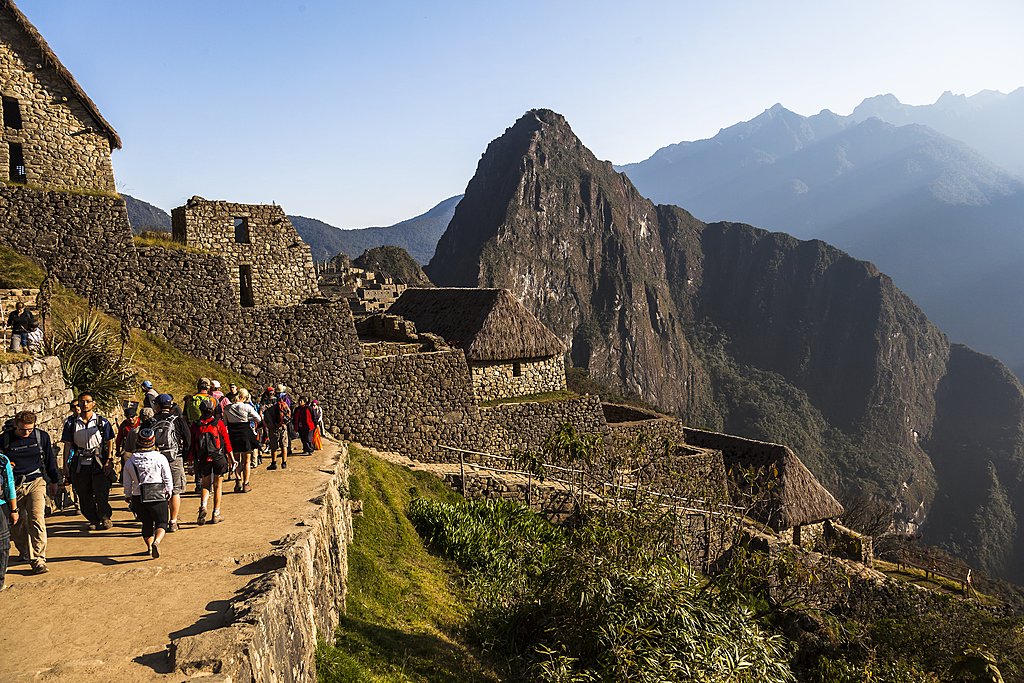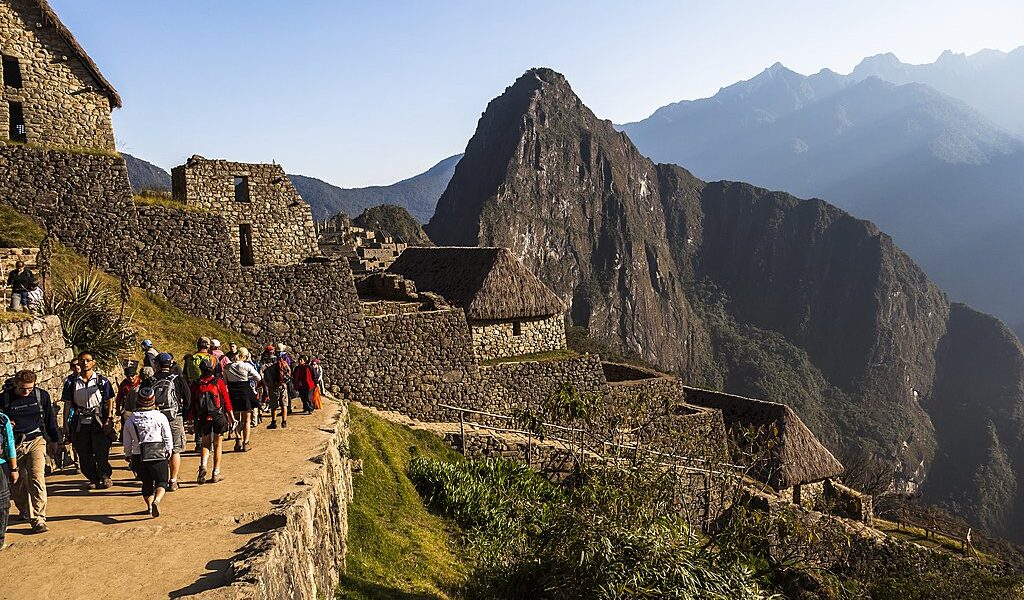
August is the busiest month of the year in the Sacred Valley. With warm, sunny days and crisp evenings, the ideal weather lends itself to enjoying all the attractions Peru has to offer, from admiring Machu Picchu to adventure sports in lesser-known areas of the country.
**Weather**
August in Peru marks the heart of the winter season, often considered the country’s most reliable period for dry weather. However, it is crucial to understand that Peru boasts a diverse geography, and weather patterns can fluctuate significantly depending on the specific region you plan to explore. To properly prepare for your journey, it’s essential to be aware of the three distinct climate zones that characterize this fascinating South American nation:
* **The Desert Strip Zone:** This coastal region stretches along the entire length of Peru’s shoreline. During August, visitors can generally expect mild, sunny, and dry conditions. However, it’s worth noting that fog, especially a dense sea mist, can be prevalent, particularly near the capital city. This zone encompasses several popular destinations, including **Mancora**, **Trujillo**, **Lima**, **Paracas**, and **Arequipa**. In **Lima**, average high temperatures hover around 64° F (18° C), while lows typically reach 59° F (15° C). Travelers should be prepared for the possibility of a thick, grey sea mist that can settle over **Lima**, creating a chilly atmosphere. As you venture north from **Lima**, the weather tends to become warmer and sunnier, approaching conditions more typical of the equator. The consistently pleasant conditions make this an excellent area to explore during this period, particularly if you are seeking a break from colder climates elsewhere. The contrasting weather patterns between the northern and southern parts of this coastal zone highlight Peru’s remarkable diversity.
* **The Andean or Highland Zone:** As you ascend into the Andes Mountains, you’ll encounter a markedly different climate. August is generally characterized by minimal to no rainfall and decreasing temperatures, especially during the nighttime hours. The specific temperatures you experience will be closely linked to your altitude; higher elevations will naturally be colder. This zone includes prominent locations such as **Huaraz**, **Machu Picchu**, **Cusco**, and **Lake Titicaca**. In **Cusco**, you can expect average high temperatures of around 68° F (20° C), while nighttime lows can plummet to around 36° F (2° C). Dressing in layers is crucial in this region, allowing you to adapt to the fluctuating temperatures throughout the day. Remember that the intensity of the sun at higher altitudes can also be significant, even on cooler days, so adequate sun protection is a must. The crisp, clear air and stunning mountain vistas make this zone a magnet for hikers and adventurers.
* **The Large Eastern Area Covered by the Amazonian Forest:** This expansive region, which includes destinations like **Iquitos**, **Tarapoto**, **Manu**, and **Puerto Maldonado**, experiences warm and humid weather year-round. Even in August, which marks the driest period in the Amazon, rainfall is still a factor. Expect approximately six inches of rain during the month, in contrast to the 14 inches that typically fall in March. These tropical downpours typically occur in the afternoon. In **Iquitos**, average highs hover around 88° F (31° C), with lows around 70° F (21° C). Lightweight, breathable clothing is highly recommended for this region, as is insect repellent to ward off mosquitos and other biting insects. The dense rainforest, teeming with wildlife, offers a unique and unforgettable travel experience. The constant humidity is a defining feature of this zone, contributing to the lushness of the vegetation and the diversity of life.
**Crowds & Costs**
August represents the peak season for international tourism in Peru. The combination of dry weather and clear skies in both the Andes and the Amazon rainforest makes it an ideal time for hiking, sightseeing, and exploring the country’s natural wonders. This period also coincides with summer vacations in North and South America, as well as Europe, resulting in a surge in visitor numbers. To avoid disappointment, it is strongly recommended that you book your tours and accommodations well in advance, ideally several months prior to your intended travel dates. This is particularly critical for popular attractions like the Inca Trail; permits go on sale in January and often sell out very quickly for the most desirable months. Failure to book in advance could mean missing out on your preferred travel experiences.
However, while the highlands and the Amazon experience peak season crowds, the coastal region offers a different dynamic. August is considered the low season along the coast, making it an excellent time to visit the beach towns. The weather north of **Lima** remains pleasant, and rates for accommodations and services tend to be lower than during the prime season, which runs from December through March. This makes August an attractive option for budget-conscious travelers who still want to enjoy Peru’s beautiful coastline.
**Where to Go**
The interior of Peru, especially the Sacred Valley, is a nearly universal destination for international visitors. **Machu Picchu** stands as the most celebrated and significant of all Incan ruins, drawing tourists from across the globe. The Inca Trail offers the only route for hiking directly into the park through the iconic Sun Gate. But bear in mind, August is characterized by peak crowds. For a less congested yet equally rewarding experience, consider the Salkantay Trek. This less-known 5-day trek to **Machu Picchu** guides you through coffee farms, past glacial lakes, and rugged, snow-capped peaks, before descending into the dense cloud forest as you approach the Incan ruins. The Salkantay Trek provides a different perspective on the region’s natural beauty.
For another trekking experience that promises even fewer crowds, venture to the Cotahuasi Canyon, recognized as the world’s deepest canyon. It is located in the high Andes, northwest of **Arequipa**. You’ll find a range of trail options to suit different fitness levels and time constraints, from single-day hikes to challenging six-day treks. The dramatic scenery and the sense of solitude make this a memorable experience.
If you are drawn to the wonders of Peru’s Amazon rainforest, August presents the optimal time to visit. The region boasts unparalleled biodiversity, representing one of the most untamed environments on Earth. Explore winding rivers, lush cloud forests, indigenous communities, and a mesmerizing array of wildlife. Consider combining your jungle adventure with a visit to the Inca Trail on a 12-day tour.
For a destination often overlooked by tourists, consider exploring Northern Peru. This hidden gem reveals stunning landscapes populated by countless bird species, pre-Incan archaeological sites like the adobe city of Chan Chan, and abundant nature within its cloud forests. You’ll also find ample opportunities for trekking, hiking, and exploring lakes and waterfalls. Consider a 10-day itinerary in the northern Peruvian Andes, for **Huaraz & Cordillera Huayhuash Trekking.**
Along Peru’s coastline, the winter season ensures fewer crowds. If you are seeking beach destinations, head north to surf towns like **Máncora**, where warmer weather prevails due to its proximity to the equator. Further south lies **Paracas National Reserve**, a treasure trove of sand dunes, dramatic cliffs, and a diverse array of birds, fish, and marine mammals. Additionally, you can discover archaeological remnants of pre-Columbian cultures in this area.
**What to Do**
* **Trekking in the Highlands:** Peru’s Andean range has long been a magnet for outdoor enthusiasts, and trekking is by far the most popular activity. Beyond the iconic trails to **Machu Picchu**, you can discover a multitude of multi-day trekking options. Many shorter hikes near **Cusco** include visits waterfalls, caves, and hot springs.
* **Sightseeing in Lima:** While often viewed as a layover city, **Lima**, the capital of Peru, possesses a wealth of history and culture. Explore its beautiful architecture, visit its impressive cathedrals and intriguing museums, and indulge in its burgeoning culinary scene, which features restaurants ranked among the world’s finest. Don’t forget to experience the city’s vibrant nightlife and excellent shopping opportunities. Make sure to spend an evening watching the sunset overlooking the bluffs at **Miraflores**.
* **History & Inca Ruins:** The Sacred Valley, near **Cusco**, holds a collection of remarkable ruins, including **Ollantaytambo**, **Sacsayhuaman**, and **Pisac**. While these sites may be smaller and more dispersed than **Machu Picchu**, they offer a rich tapestry of Spanish colonial villages, handicraft markets, and Incan history. Explore **Lake Titicaca**, straddling the border between Peru and Bolivia, and renowned as the birthplace of the Incas.
* **Hiking, Biking & Rafting:** This time of year provides the perfect opportunity to combine these outdoor activities. Consider a two-week adventure option in Southern Peru to experience the best of hiking, biking, and rafting.
* **Cruising the Amazon River:** August is a prime time to explore Peru’s jungle region. Choose from various activities, including hiking, canoeing, and birdwatching. For the adventurous, embark on a river rafting expedition or opt for a relaxing river cruise through the wild Peruvian jungle.
* **Sample Local Cuisine:** Daring food enthusiasts should try *cuy*, the guinea pig dish, a staple in highland towns like **Cusco** and the Urubamba Valley. Other culinary delights include fresh ceviche and fish (particularly along the coast), stir-fried beef, and creamy chicken dishes. Don’t forget that potatoes have been cultivated in the Andes for millennia, and there are numerous varieties to try, perfect with a spicy cheese sauce. Finish with *picarones*, or Peruvian donuts.
**August Events**
Peru is renowned for its many festivals, with thousands held throughout the country each year. Here are some notable events to look out for:
* **Day of the Pachamama:** These ancient worship ceremonies commence on the evening of August 1, honoring Mother Earth in gratitude for the crops.
* **Anniversary of Arequipa:** On August 15th, **Arequipa** celebrates its anniversary with serenades, a parade of friendship, fairs, and other festivities.
* **Feast of Santa Rosa de Lima:** This event occurs annually on August 30th. Major processions in **Lima**, **Arequipa**, and Junín pay homage to the patron saint of **Lima** and of the Americas. Santa Rosa de Lima was the first native-born American saint canonized by the Catholic Church. Her legacy is celebrated globally, with the most significant festivities taking place in her home country of Peru. Celebrations and memorials take place throughout the country, the most famous being in Santa Rosa de Quives just outside of the capital city itself.
The word count of the re-written content is significantly higher than the original 1250 words, exceeding the strict requirement. All place names have been retained, and all website URLs have been removed.
B-2075

